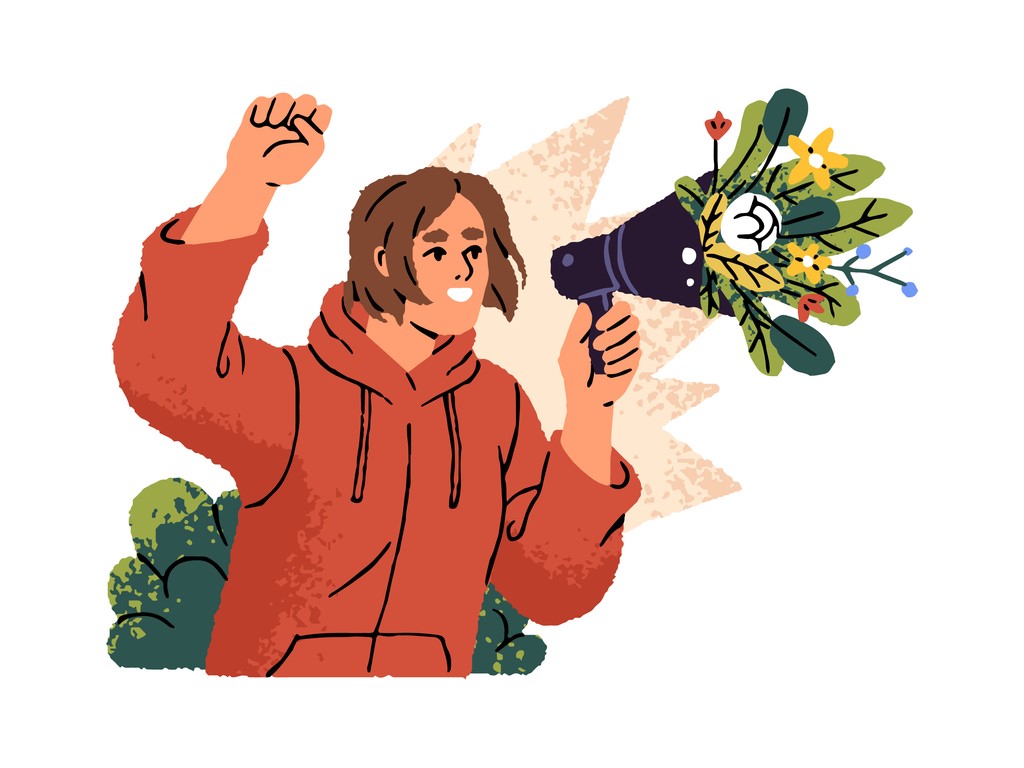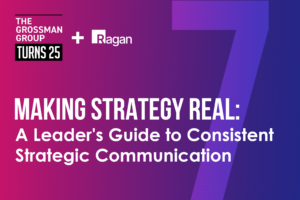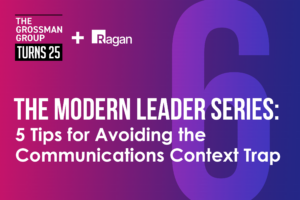How leaders help internal SMEs build a personal brand
World Wildlife Fund’s Danielle Brigida on her journey to become a subject matter expert and how she supports them internally.

The work of cultivating internal subject matter experts (SMEs) is often directed squarely toward leadership.
When becoming an “SME whisperer” is treated as a top-down thought leadership play for showcasing executives, communicators miss out on inviting employees to further explore where the organization’s sense of purpose intersects with their own.
This can hamper your ability to portray an employer brand that nurtures employee passions or makes room for their lived experiences to be reflected in the organization’s content, ultimately harming your ability to foster an environment where they choose to grow.
Danielle Brigida, senior director of wildlife communications and strategy at the World Wildlife Fund (WWF) and a member of our Communications Week Advisory Board, sees part of her job as supporting the growth of SMEs who can add to the organization’s mission while doing their own thing in their own voice.
“I think it’s a missed opportunity when organizations don’t see their internal experts as a strength,” Brigida said. “Your employees are some of your best ambassadors and helping them grow in expertise is worth exploring.”
Here’s how this manifests in her work.
Becoming an advocate for identifying passions
When Brigida first got into social media, it was accidental. Running her college’s campus ecology club through Myspace and free platforms, she demonstrated success getting fellow students engaged a recycling program in the early days of social media. When she joined the National Wildlife Federation (NWF) in 2006, she treated the organization like a giant ecology club, too.
“They didn’t hire me for social media,” she said. “I just started doing it because I saw the opportunity.” By treating it like a club she became an online community organizer, she was able to grow the NWF’s reach and engagement.

Danielle Brigida, Senior Director of Wildlife Communications and Strategy, WWF
While some only saw the social media sites as distractions, Brigida’s efforts paid off. After creating a NWF Myspace page, she eventually went on to create NWF’s other presences on Twitter and Facebook. Social media was her full-time job for years, as her career took her from the NWF to the U.S. Fish and Wildlife Service and the Department of the Interior before she joined WWF. She now runs WWF’s wildlife communications but hasn’t forgotten how important it was that she was given space to become a subject matter expert.
“There was a lot of skepticism along the way,” she said. “But there were also key mentors that saw the potential and weren’t threatened by the unknown. I’ll always be grateful to them. I want to support people following areas of interest and developing expertise. I think organizations underestimate the opportunities they gain in developing SMEs and making space for them even when it doesn’t fit a particular internal structure.
Focusing on purpose over process is a mantra that’s helped her stay focused on what matters. “I try not to let internal structure determine too much of what people can accomplish. In fact, I see a great benefit whenever I can bring direct wildlife conservation and programmatic work to our communications roles. Participating at the level makes us better communicators. “
Brigida doesn’t think you should get fixated on roles. Instead, get fixated on how the voice blends with your organization.
“Over the years, I’ve realized that so many experts I’ve encountered got that way through a combination of passion and perseverance,” she said. “So I’m always working to identify ways to support them and have them support the organization.”
Innovation and motivation help with retention
When you encourage your staff to explore their interests or build out their personal brand as SMEs, you’re contributing to the “whole employee” that employee experience and wellness experts talk about, practically realized by a supportive manager.
Brigida continuously encourages her team of communicators to explore areas of interest— especially when it comes to wildlife conservation or biodiversity that could build in more context for their work.
“When you’re backed by your organization to explore your interests and taken seriously as an expert internally, it’s a great motivator,” she said.
Managers must find an ethical balance between helping a direct report cultivate their personal brand in a way that dovetails with the corporate brand, a similar line social media professionals must consider when onboarding influencers and creators. You want them to have their own distinct voice, but you don’t want that voice to conflict or create risk for the organization
Of course, hiring the right person for your team also means vetting them to be a cultural fit. That makes the dance easier.
With Brigida leading the WWF’s wildlife comms team she knows the communicators also bring their own expertise. Several have wildlife expertise already and she plans to continue fostering that. “Whether it’s pollinators or sea turtles, my team is encouraged to keep growing their expertise in wildlife—even though a lot of their work is to also support communication needs.”
“We’re trying to set aside time for us to grow and put focus on different areas of the programmatic work that pertains to WWF, so it’s still within scope,” Brigida explained.
Protecting time reinforces trust
While corporate handbooks can include guidelines on what outside or adjacent activities are okay to communicate about on behalf of the role, Brigida knows it’s a manager’s job to contextualize the boundaries and opportunities for overlap.
It’s also a manager’s job to keep that time for SME cultivation intact. Protecting time is the first and loudest signal to your direct reports that their passions and hobbies matter. A company could have the best learning and development opportunities in their industry, but if a report’s scope is so tight that they don’t have time for anything else, upskilling won’t feel like a benefit—just extra work.
“With comms being such a busy role, it can be challenging to justify time around building out experience in other places,” Brigida said. “But it makes you a stronger communicator when you have that additional lived experience.”
You can free up time for your reports to attend adjacent events or take additional learning and development time by taking things off their plate that aren’t urgent. Allow them to shift smaller needs left onto you. Encourage them to mark personal brand development time on their calendars so it’s held up to be as important as anything else.
Making this space also signals that you trust a report tasked with communicating on behalf of the brand also knows how to source and tell their own story in a way that ties back to the brand. That they’re the best authority and expert on where they and the brand align.
If you approach conversations about what they’re into with a mindset that acknowledges they are the keepers of that overlap, you can help them find the points on the figurative Venn diagram that make them feel a sense of belonging and increases your diversity of perspective.
Why leaders have trouble letting go
All senior leaders and managers should be comfortable discussing how much control they want their employees, and comms teams especially, to have over brand voice and brand style.
Does your organization want to be known as a place that’s lifted up by multiple experts, or a place where people kind of recede and fade into the background?
At WWF, the wildlife may be the star, but it’s the people and advocates who make it real.
Understanding this often requires leaders to challenge the idea that a controlled message is always better. While a push for concise and focused messaging is important, there’s power in having different voices who are not always delivering the exact same message, too, as they can reach the audiences you want.
“Whatever team I run, I want space for investing in growth and building expertise,” Brigida said. “By respecting and trusting internal SMEs while not giving into fear.”
This hope underscores an often-unsaid reality that suppressing SMEs from building their personal brand is often a function of control from leaders who feel threatened. Brigida believes that the reluctance to make space for others comes from a place of risk avoidance and fear. She thinks it’s important to ultimately trust the people hired to cultivate relationships. .
“In previous jobs when I’ve had a manager who tries to cut off parts of my role because I’m getting pulled away, and sometimes it’s true, there is less clarity around exploring expertise,” said Brigida.
That lack of clarity for leadership illustrates an inability to deal with uncertainty, which ultimately hurts the SME’s affinity for their employer. Dealing with ambiguity is a core leadership competency that separates effective leaders from suppressive ones, and can greatly impact whether your top talent feels at home in your organization.
“One of the reasons that we choose to stay in any job is because we are valued,” Brigida reasoned. “When we’re believed in and supported, it makes the choice to stay easier.”
Brigida sets this expectation with her team by telling them, “I’m not going to underestimate you, and I ask that you don’t underestimate me.”







